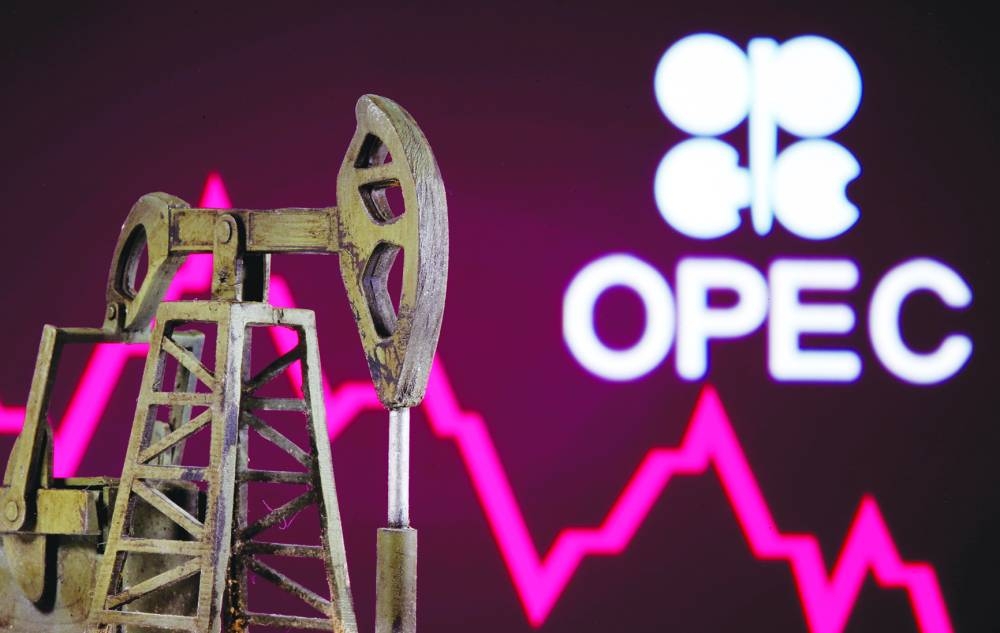Opec production cuts are expected to weigh on GCC growth in 2023, Emirates NBD said and now forecasts region’s headline GDP growth at 2.3% for 2023, down from 3.2% previously.
The biggest voluntary cuts will come from Saudi Arabia, which will reduce oil production by 500,000 barrels per day (bpd) from May. If the cuts are maintained through the end of 2023, average crude production this year will decline by more than 4% from 2022 levels.
While investment in boosting capacity in the oil and gas sector will continue, Emirates NBD now expects overall hydrocarbon GDP to decline by -2.0% in 2023 against a previous forecast of 2.0% growth.
With the non-oil sector growth estimate unchanged at 4.8%, headline GDP for the kingdom will likely reach 2.1% this year, a full percentage point lower than we had previously expected.
The UAE indicated it would voluntarily cut crude oil production for 2023 by 144,000 bpd from May, which would also result in a decline in average output this year relative to 2022.
However, the UAE has brought forward planned investment in oil and gas capacity in order to reach 5mn bpd by 2027 rather than 2030, which will support growth in the hydrocarbons sector even as crude production declines.
“At this stage, we still expect oil and gas GDP to contribute positively to overall growth, although to a smaller extent than previously envisaged. As a result, we have revised our 2023 UAE GDP growth forecast down to 3.4% from 3.9% previously, with our forecast for non-oil sector growth remaining unchanged at 3.5%.
“Similar adjustments to hydrocarbon sector growth forecasts for Kuwait and Oman result in downward revisions to headline GDP growth to 0.2% (previously 2.4%) and 1.7% (previously 2.8%) respectively, again with no changes to non-oil sector growth estimates at this stage,” Emirates NBD said.
Emirates NBD said it had already revised its forecasts for GCC budgets lower on the back of its downward adjustment to the 2023 oil price estimate a couple of weeks ago.
Reducing the amount of oil produced and sold will further negatively impact budget revenues for oil exporting countries.
For the whole GCC, the forecast budget surplus for 2023 is now 1.8% of GDP from 2.5% previously. It now expects Saudi Arabia to run a close to balanced budget, while Kuwait is likely to post a small deficit of -0.3% of GDP. The UAE’s forecast surplus has been reduced to 5.6% of GDP from 6.2% of GDP previously.
With fewer barrels of oil produced this year, the break-even oil price (the oil price required on each one in order to balance the budget) rises as well, unless government spending is reduced proportionately or non-oil revenues increase.
The UAE’s breakeven oil price is not easy to estimate as revenues are split into tax and non-tax revenue (not oil and non-oil). However, the researcher thinks the UAE’s break-even oil price in 2023 is likely to be between $60-65/barrel, the lowest in the GCC.
Current account surpluses have also been adjusted to reflect lower volumes of oil produced and exported relative to expectations at the start of the year.
All GCC countries are still expected to run current account surpluses in 2023, with the weighted average for the region at 12.5% of GDP this year, down from an estimated 16.8% in 2022, Emirates NBD noted.
Business
Opec production cuts seen to weigh on GCC's 2023 growth; headline GDP growth forecast at 2.3%

The biggest voluntary cuts will come from Saudi Arabia, which will reduce oil production by 500,000 barrels per day from May. If the cuts are maintained through the end of 2023, average crude production this year will decline by more than 4% from 2022 levels

